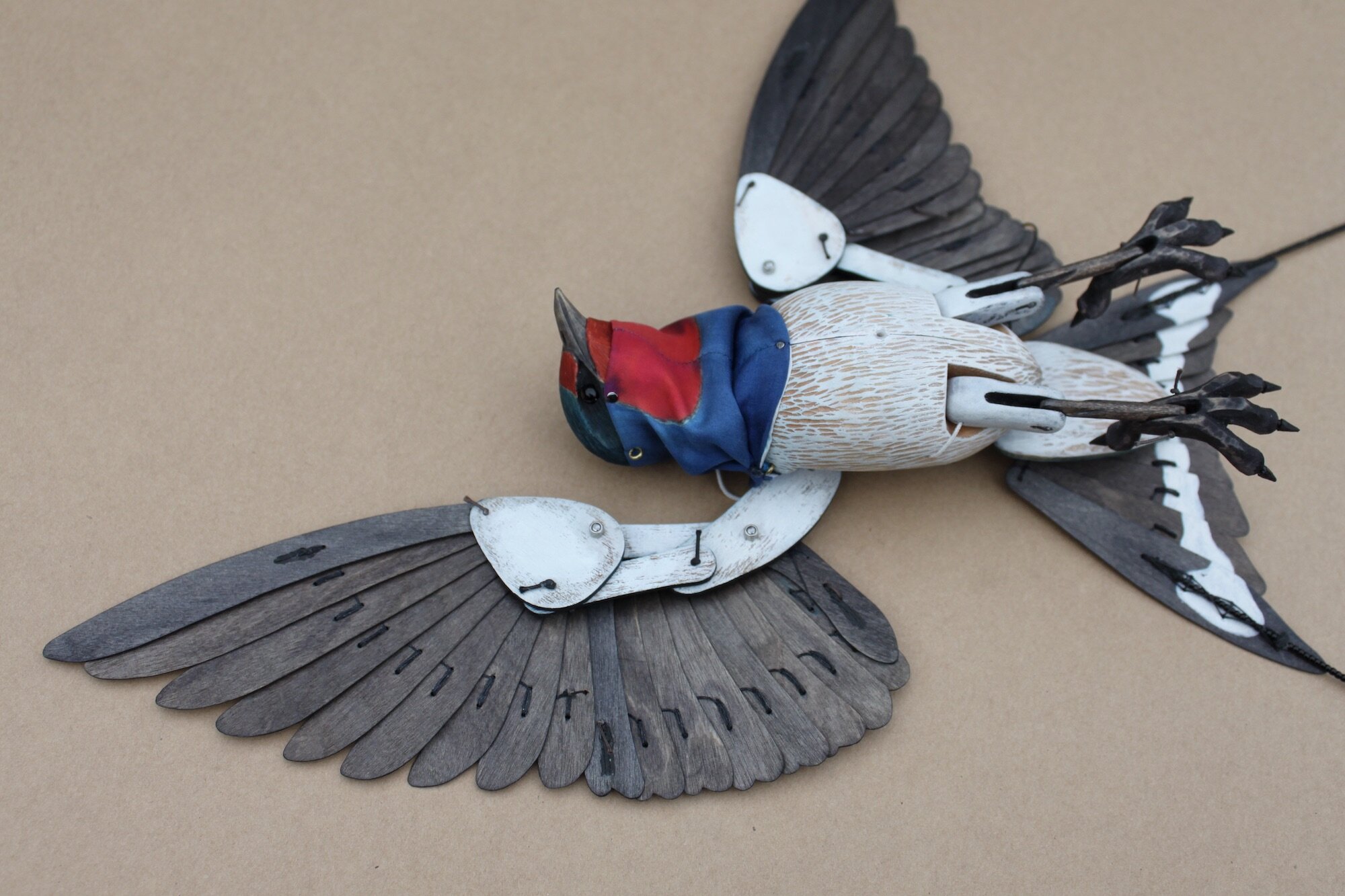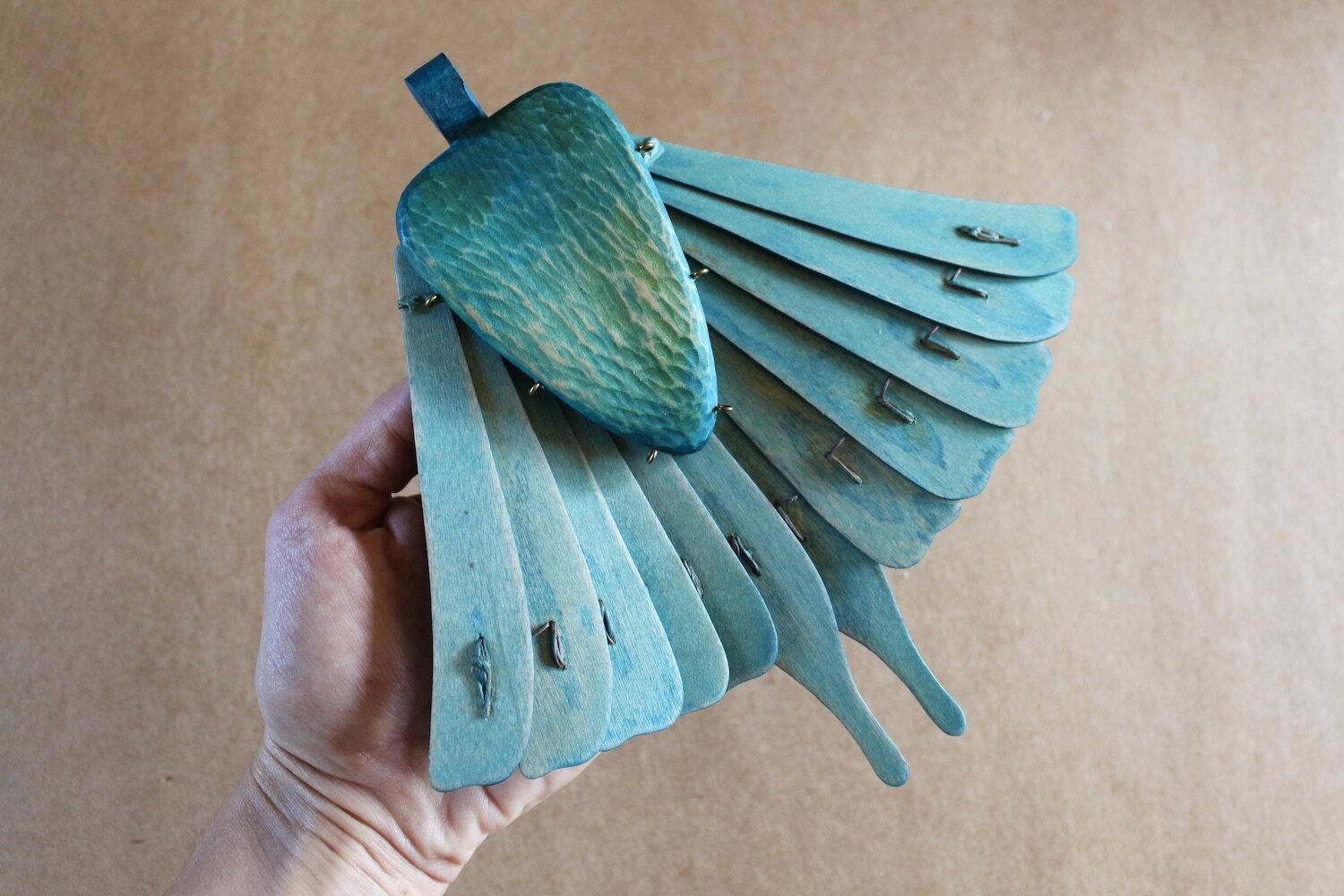'Flying with Strings' part 3: bee-eater and swallow
Colour plate from The Complete Illustrated Thorburn's Birds (1989)
Learning through LOCK DOWN continues…
Three months on from my last post and life is yet to return to ‘normal’. While lock down restrictions have eased for many in the UK, I am still working from home. My little workshop is tucked away inside a large public building in Totnes (Devon). Sadly the building had to close at the onset of the pandemic back in March and is yet to reopen. Access to my things has been limited. It has not been an ideal situation, but in the grand scheme of things I feel I have little to complain about. If anything, ‘lock down’ has brought its own rewards: the excuse to get completely immersed in my projects, that little bit of extra time to go out for walks, the nature on my doorstep (hares, owls, swallows, swifts, woodpeckers and deer stags, to name a few) and the opportunity to slow down and reconnect with my family. I realise, of course, that these past few months have been incredibly difficult for A LOT of people. I have been one of the lucky ones, and I am hugely grateful for that.
As I have mentioned in previous posts, back in the Autumn I received a DYCP (Develop Your Creative Practice) grant from Arts Council England. I have devoted this funding to developing my skills as a craftsperson, both as a woodcarver and puppet maker. A HOOPOE MARIONETTE was the first ‘offspring’ of this development period (and the main protagonist of my last blog post). A BEE-EATER and a BARN SWALLOW have now followed suit, though they are yet to take flight. I will be making two new marionette controls in the coming weeks/months so that, all being well, these puppets will be performance-ready for 2021. Dreams of a new puppet show are bubbling, though what form it will take remains to be seen…
If one swallow does not make a summer, then what does?
I’ve already touched upon the symbolism of hoopoes in mythology and folklore, as well as their more scientific reputation. I’m yet to read up on swallows and bee-eaters in the same amount of detail. However, I have been contemplating a thematic connection between all three of these birds: MIGRATION. The Eurasian hoopoe is widespread across Europe and Western Asia, but it commonly overwinters in Africa, as does both the European bee-eater and the European barn swallow. Swallows are, of course, regular visitors to the UK, arriving in April/May each year and heralding the start of summer. The hoopoe and the bee-eater, however, are British ‘vagrants’, occasionally overshooting their migratory path and rocking up on our coastlines each year in a state of mild confusion. To see a hoopoe or a bee-eater in the UK is therefore a rare blessing. One swallow might not make a summer, but several swallows, one hoopoe, AND one bee-eater definitely would!
Puppetry in performance: where, when, how?
Back in 2016/17 I created a puppet show called ‘The Fisher’Knight’s Tale’ which toured to ‘intimate’ spaces, including rural libraries, festival tents and schools. Right now, during a worldwide pandemic, the prospect of ‘intimate spaces’ feels tantamount to treason, so I may have to rethink the setting for my next show. A socially-distanced walkabout perhaps?…I’ll give it some thought!

























